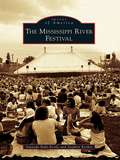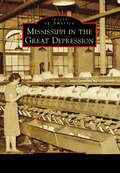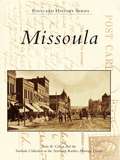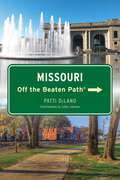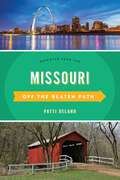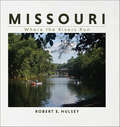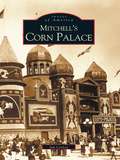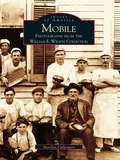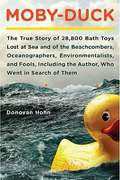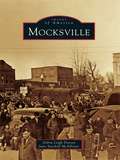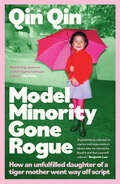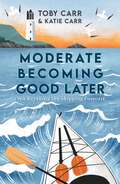- Table View
- List View
Mississippi River Festival, The
by Stephen Kerber Amanda Bahr-EvolaIn 1969, Southern Illinois University Edwardsville initiated a remarkable performing arts series called the Mississippi River Festival. Over 12 summer seasons, between 1969 and 1980, the festival presented 353 events showcasing performers in a variety of musical genres, including classical, chamber, vocal, ragtime, blues, folk, bluegrass, barbershop, country, and rock, as well as dance and theater. During those years, more than one million visitors flocked to the spacious Gyo Obata-designed campus in the countryside near St. Louis. The Mississippi River Festival began as a partnership promoting regional cooperation in the realm of the performing arts. Southern Illinois University Edwardsville invited the St. Louis Symphony to establish residence on campus and to offer a summer season. To host the symphony, the university created an outdoor concert venue within a natural amphitheater by installing a large circus tent, a stage and acoustic shell, and a sophisticated sound system. To appeal to the widest possible audience, the university included contemporary popular musicians in the series. The audacity of the undertaking, the charm of the venue, the popularity of the artists, the excellence of the performances, and the nostalgic memory of warm summer evenings have combined to endow the festival with legendary status among those who attended.
Mississippi Solo: A River Quest
by Eddy Harris Eddy L. HarrisSince the publication of his first book, Mississippi Solo, Eddy L. Harris has been praised for his travel writing. In this exciting reissue of his classic travelogue, readers will come to treasure the rich insightful prose that is as textured as the Mississippi River itself. They will be taken by the hand by an adventurer whose lifelong dream is to canoe the length of this mighty river, from Minnesota to New Orleans. The trip's dangers were legion for a Black man traveling alone, paddling from "where there ain't no black folks to where they still don't like us much." Barge waives loom large, wild dogs roam the wooded shores, and, in the Arkansas dusk, two shotgun-toting bigots nearly bring the author's dream to a bloody . Sustaining him through the hard weeks of paddling were the hundreds of people who reached out to share a small piece of his challenge. Mississippi Solo is a big, rollicking, brilliant book, a wonderful piece of American adventure, and an unforgettable story of a man testing his own limits.
Mississippi Solo: John Murray Journeys (Overcoming Books)
by Eddy L HarrisINTRODUCED BY ADAM WEYMOUTH, award-winning author of The Kings of Yukon'A wonderful book -- and a highly original contribution to the literature of travel' PAUL THEROUX'The Mississippi. Mighty, muddy, dangerous, rebellious and yet a strong, fathering kind of river. The river captured my imagination when I was young and has never let go.' Mississippi Solo tells the story of one man's voyage by canoe down the Mississippi River from its source in Minnesota to the Gulf of Mexico - a longtime dream, and a journey of over 2,000 miles through the heart of America. Paddling into the Southern states - going from 'where there ain't no black folks to where they still don't like us much' - Eddy is confronted by the legacy of slavery and modern racism, including an incident with a pair of shotgun-toting bigots. There are also the dangers of passing barges, wild dogs roaming the wooded shore, and navigating a waterway that grows vaster, and more hazardous, every day. But Eddy also encounters immense human kindness, friendship and hospitality, as well as coming to know the majestic power - and the awesome dangers - of the river itself. Mississippi Solo is an unforgettable American adventure.
Mississippi in the Great Depression (Images of America)
by Richelle PutnamBy the time the Great Depression was well underway, Mississippi was still dealing with the lingering effects of the flood of 1927 and the Mississippi Valley drought of 1930. As Pres. Franklin Roosevelt took office in 1933, Mississippi senator Pat Harrison, chair of the Senate Committee on Finance, oversaw the passage of major New Deal legislation, from which Mississippi reaped many benefits. Other Mississippi politicians like Gov. Mike Connor initiated measures to improve the treatment of inmates at Parchman Prison in the Delta and Gov. Hugh White established the Balancing Agriculture with Industry initiative. Women also played an active role. The Natchez Garden Club successfully spurred tourism by starting the state's first pilgrimage in 1932. Mississippians found employment through the Public Works Administration and the Civilian Conservation Corps, which stimulated economic development through new and add-on construction in urban and rural areas and the construction of nine state parks. For black Mississippians, segregation and discrimination in New Deal benefits and jobs continued, but what they did receive from the federal government spurred a determination to fight for equality in the Jim Crow South.
Mississippi! (Wagons West Series, Book #15)
by Dana Fuller RossFrom north of St. Louis down past Natc Kez to the fertile Bayou, the broad deep river carried barges piled high with valuable cargo and stern -wheelers crowded with eager Americans hungry for the sin and sweetness of exciting New Orleans, But on its seamier streets a dark underworld flourished. There, a cruel ex-lawman hid the beautiful young gentlewoman he had seduced with lies, while he plotted to kill the bold Englishman who had sworn to avenge her honor. And from the far west rode Toby Holt-a fighting man as famous as his father, Wagonmaster Whip Holt-to wage a one- man war on a dreaded Oriental Tong... as the forces of good and evil prepared to battle for control of this rich, fast growing land along the MISSISSIPPI!
Missoula
by Svoboda Collection at the Northern Rockies Heritage Center Stan B. CohenMissoula began in 1860 as Hellgate Village, a trading post located about 4 miles west of what is now downtown. In 1864, the construction of a mill powered by water diverted from Rattlesnake Creek drew residents of Hellgate to the new town, and the arrival of the Northern Pacific Railroad in 1883 assured Missoula's future. The establishment of the University of Montana led to growth on the south side of the Clark Fork River, and the timber industry drove the economy. Missoula has evolved into a trade, medical, educational, and governmental center of western Montana.
Missouri Off the Beaten Path® (Off the Beaten Path Series)
by Patti DeLanoTired of the same old tourist traps? Whether you&’re a visitor or a local looking for something different, Missouri Off the Beaten Path shares with you the Show Me State with new perspectives on timeless destinations and introduces you to those you never knew existed—from the best in local dining to quirky cultural tidbits to hidden attractions, unique finds, and unusual locales. So, if you&’ve &“been there, done that&” one too many times, get off the main road and venture Off the Beaten Path.
Missouri Off the Beaten Path®: Discover Your Fun (Off the Beaten Path Series)
by Patti DeLanoTired of the same old tourist traps? Whether you&’re a visitor or a local looking for something different, Missouri Off the Beaten Path shares with you the Show Me State with new perspectives on timeless destinations and introduces you to those you never knew existed—from the best in local dining to quirky cultural tidbits to hidden attractions, unique finds and unusual locales. So if you&’ve &“been there, done that&” one too many times, get off the main road and venture Off the Beaten Path.
Missouri in World War I (Images of America)
by Jeremy Paul AmickThe state of Missouri played a unique role in World War I--as the birthplace of Gen. John J. Pershing, the commanding officer of the American Expeditionary Forces, and Maj. Gen. Enoch Crowder, the primary author of the military draft--and it is an impressive legacy featuring a colorful cast of characters, events, and communities. Missouri was home to two flying aces of the war as well as Bennett Champ Clark, the youngest colonel in the American Expeditionary Forces and the first national commander of the American Legion. During the war, the state was home to farms and ranches that provided an army of mules that assisted Allied forces in hauling critical materials and equipment in the harshest of conditions. Additionally, 156,000 of the state's citizens served in the military with approximately 10,000 wounded or killed in action.
Missouri: Where the Rivers Run
by Robert E. HulseyKnown for its scenic rivers, reowned state parks and beautiful vistas, Missouri offers enjoyment for anyone seeking a variety landscapes, natural wonders, charming small towns, and cosmopolitan urban Known for its scenic rivers, renowned state parks and beautiful vistas, Missouri offers enjoyment for anyone seeking a variety of landscapes, natural wonders, charming small towns, and cosmopolitan urban adventures. In Missouri: Where the Rivers Run, follow photographer Robert E. Hulsey on a visual journey across the Show-Me State as he travels from the rolling plains in the northern part of the state to the Ozark Mountains in the south, showcasing the natural heritage along the way. Through these 175 stunning photographs, visit the lush hiking trails at Graham Cave State Park, experience a float trip down the Black River, witness a celebration in Mark Twain's hometown, and get the perfect view of the Cathedral Basilica's painted ceiling. Through the lens of his camera, Robert captures the many wonders of the state and the people who call it home.A beautiful coffee-table book, Missouri: Where the Rivers Run will inspire travelers to explore the splendor and the history of this picturesque Midwest state.
Mitchell's Corn Palace
by Jan CerneyThe world's only Corn Palace began as "The Corn Belt Exposition" in 1892, a promotional enterprise established to showcase the rich agricultural region of the James Valley. The exposition became a popular annual event, and an icon of the American prairie. The Corn Palace has occupied three different buildings since 1892. Adorned each autumn with corn, grains, and native grasses in decorative patterns and themes, the Corn Palace has hosted famous entertainers, politicians, and community events. Now well into its second century and going strong, the Corn Palace has become a symbol of South Dakota. Mitchell's Corn Palace tells the unique story of the palace through a collection of over 200 fascinating vintage images, chronicling this unique piece of Americana.
Miziker's Complete Event Planner's Handbook: Tips, Terminology, and Techniques for Success
by Ron MizikerGold Winner for Reference in Foreword Reviews' 2015 INDIEFAB Book of the Year AwardsWith decades of experience as a gala event planner, award-winning director and producer Ron Miziker presents the ultimate guide to planning and executing every special event in this one-of-a-kind guidebook. For professionals and beginners alike, it is designed to be a quick reference for ensuring that any exciting, educational, or entertaining event comes together on time and within budget. The book includes essential information about critical subjects, proven suggestions, and personal anecdotes to make your event memorable and successful. Whether your questions concern layout, techniques, terminology, protocol, quantities, or procedures, this book has the answers with quick-to-understand charts and diagrams that illustrate key information to make the event great—be it a sales meeting, wedding, awards dinner, community festival, concert, fund-raiser, cocktail party, grand opening, political rally, formal dinner, exhibition, press announcement, family celebration, or informal gathering at home.
Mobile Home: A Memoir in Essays (Association of Writers and Writing Programs Award For Creative Nonfiction Ser.)
by Megan HarlanUprooting ourselves and putting down roots elsewhere has become second nature. Americans are among the most mobile people on the planet, moving house an average of nine times in adulthood. This book explores one family's extreme and often international version of this common experience. Inspired by the author's globe-wandering childhood-during which she lived in seventeen homes across four continents, ranging in location from the Alaskan tundra to a Colombian jungle, a posh flat in London to a doublewide trailer near the Arabian Gulf-the book maps the emotional structures and metaphysical geographies of home. In ten interconnected essays, the author examines cultural histories that include Bedouin nomadic traditions and modern life in wheeled mobile homes, the psychology of motels and suburban tract housing, and the lived meanings within the built landscapes of Manhattan, Stonehenge, and the Winchester Mystery House. More personally, she traces the family histories that drove her parents to seek so many new horizons-and how those places shaped her upbringing. Her mother viewed houses as a kind of large-scale plastic art ever in need of renovating, while her father was a natural adventurer and loved nothing more than to travel, choosing a life of flight that also helped to mask his addiction to alcohol. These familial experiences color the author's current journey as a mother attempting to shape a flourishing, rooted world for her son. Her memoir in essays skillfully explores the flexible, continually inventive natures of place, family, and home.
Mobile Narratives: Travel, Migration, and Transculturation (Routledge Interdisciplinary Perspectives on Literature #18)
by Jopi Nyman Eleftheria Arapoglou Mónika FodorEmphasizing the role of travel and migration in the performance and transformation of identity, this volume addresses representations of travel, mobility, and migration in 19th–21st-century travel writing, literature, and media texts. In so doing, the book analyses the role of the various cultural, ethnic, gender, and national encounters pertinent to narratives of travel and migration in transforming and problematizing the identities of both the travelers and "travelees" enacting in the borderzones between cultures. While the individual essays by scholars from a wide range of countries deal with a variety of case studies from various historical, spatial, and cultural locations, they share a strong central interest in the ways in which the narratives of travel contribute to the imagining of ethnic encounters and how they have acted as sites of transformation and transculturation from the early nineteenth century to the present day. In addition to discussing textual representations of travel and migration, the volume also addresses the ways in which cultural texts themselves travel and are reconstructed in various cultural settings. The analyses are particularly attentive to the issues of globalization and migration, which provide a general frame for interpretation. What distinguishes the volume from existing books is its concern with travel and migration as ways of forging transcultural identities that are able to subvert existing categorizations and binary models of identity formation. In so doing, it pays particular attention to the performance of identity in various spaces of cultural encounter, ranging from North America to the East of Europe, putting particular emphasis on the representation of intercultural and ethnic encounters.
Mobile: Photographs from the William E. Wilson Collection (Images of America)
by Marilyn CulpepperBeautiful Mobile, Alabama, on the Gulf of Mexico, has a colorful history dating back to its founding in 1702. Few photographers have captured the essence of Mobile-its people, places, and events-to the extent of master photographer William Ernest Wilson. Wilson's photography vividly depicts Mobile life at the turn of the twentieth century and is the subject of this engaging visual journey. From nationally elected officials such as Theodore Roosevelt to local Mardi Gras royalty, from entrepreneur Gordon Smith of Smith's Bakery to Africa Town founder Cudjoe Lewis, from a stately cathedral to country churches, from thriving banks and theaters to lumber yards and banana docks, the people and places of Mobile are revealed through Wilson's camera as a kaleidoscope of life in a bustling seaport. Artistic shading and Wilson's innate ability to see beyond the lens give his photographs an air of the contemporary while reflecting a bygone era of simplicity. These images simultaneously reveal the height of Victorian photographic art and daily life in one of the South's first major cities. Covering the period from 1894 to 1905, the collection features personalities, street scenes, and architectural treasures of the past. Preserved on their original dry glass negatives, a significant portion of Wilson's Mobile photographs are collected and printed here in a single edition for the first time.
Mobilities in Socialist and Post-Socialist States
by Kathy Burrell Kathrin HörschelmannThis edited collection explores what mobility meant, and means, in the specific contexts of socialist and post-socialist Soviet and East European societies. Under the socialist regimes, mobility was at the heart of everyday interactions with the state, from controls on travel and communications mobilities to daily experiences of transport usage and the immobility of queuing for goods at times of shortages. These mobilities have been reshaped under post-socialist regimes. While the collapse of socialism heralded a liberalization of international migration and increased automobility, new experiences of poverty, unemployment, and in the case of some states, war, plus the loss of subsidized travel greatly reduced fields of mobility. Bringing together contributors from the dynamic fields of Mobilities and Socialist/Post-Socialist Studies this book uses the focus on socialist and post-socialist mobilities to investigate fundamental intersections of power, control, resistance and inequality.
Mobility and Globalization in the Aftermath of COVID-19: Emerging New Geographies in a Locked World
by Maximiliano E. Korstanje Babu GeorgeThis book argues that COVID-19 revives a much deeper climate of terror which was instilled by terrorism and the War on Terror originally declared by Bush's administration in 2001. It discusses critically not only the consequences of COVID-19 on our daily lives but also “the end of hospitality”, at least as we know it.Since COVID-19 started spreading across the globe, it affected not only the tourism industry but also ground global trade to a halt. Governments adopted restrictive measures to stop the spread of the virus, including the closure of borders, and airspace, the introduction of strict lockdowns and social distancing, much of which led to large-scale cancellations of international and domestic flights. This book explores how global tourists, who were largely considered ambassadors of democratic and prosperous societies in the pre-pandemic days, have suddenly become undesired guests.
Moby Dyke: An Obsessive Quest To Track Down The Last Remaining Lesbian Bars In America
by Krista BurtonA former Rookie contributor and creator of the popular blog Effing Dykes investigates the disappearance of America&’s lesbian bars by visiting the last few in existence.Lesbian bars have always been treasured safe spaces for their customers, providing not only a good time but a shelter from societal alienation and outright persecution. In 1987, there were 206 of them in America. Today, only a couple dozen remain. How and why did this happen? What has been lost—or possibly gained—by such a decline? What transpires when marginalized communities become more accepted and mainstream? In Moby Dyke, Krista Burton attempts to answer these questions firsthand, venturing on an epic cross-country pilgrimage to the last few remaining dyke bars. Her pilgrimage includes taking in her first drag show since the onset of the pandemic at The Back Door in Bloomington, Indiana; competing in dildo races at Houston&’s Pearl Bar; and, despite her deep-seated hatred of karaoke, joining a group serenade at Nashville&’s Lipstick Lounge and enjoying the dreaded pastime for the first time in her life. While Burton sets out on the excursion to assess the current state of lesbian bars, she also winds up examining her own personal journey, from coming out to her Mormon parents to recently marrying her husband, a trans man whose presence on the trip underscores the important conversation about who precisely is welcome in certain queer spaces—and how they and their occupants continue to evolve. Moby Dyke is an insightful and hilarious travelogue that celebrates the kind of community that can only be found in windowless rooms soundtracked by Britney Spears-heavy playlists and illuminated by overhead holiday lights no matter the time of year.
Moby-Duck
by Donovan HohnWhen Donovan Hohn first heard the remarkable story of how 28,904 bath toys spilled into the Pacific en route to the US from China and have been washing up along beaches throughout the world ever since, he decided to find out more and assumed he would interview a few oceanographers, talk to some beachcombers and read up on Arctic science and geography. ‘But questions can be like ocean currents: wade in too far, and they carry you away. ’ Setting out on a series of journeys to track the renegade rubber ducks, Moby-Duck is an adventure into the heart of the sea through science, myth, the global economy and some of the worst weather imaginable, and the riveting story of an accidental odyssey which pulled Hohn into the secretive world of shipping conglomerates, the daring terrain of Arctic researchers, the lunatic risks of maverick sailors, and the shadowy domain of Chinese toy factories. With each new discovery, Hohn learns of another loose thread, and with each successive chase he comes closer to understanding where his castaway quarry comes from (and where it is heading…). In the grand tradition of Tony Horwitz and David Quammen, Moby-Duck is a compulsively readable narrative of whimsy and curiosity for anyone who is interested in obsession, travel, plastic, and that great American novel, Moby-Dick.
Mocksville
by Debra Leigh Dotson Jane Satchell McallisterOld photographs offer subjective and evocative evidence of the way we lived and worked in years past. Images of America: Mocksville shares the photographic story of the development of the town of Mocksville and its people to the mid-1900s. Named the seat of newly created Davie County in 1839, the town of Mocksville, originally known as Mocks Old Field, existed as early as the Revolutionary War. Photographs support documentary evidence of various trades as well as agricultural pursuits. Not all buildings or homes survive a town's growth, and Mocksville provides evidence of the passing parade of homes that did not survive. History comes alive as we rediscover and share old photographs and contemplate what they divulge of past times and lives.
Model Minority Gone Rogue: How an unfulfilled daughter of a tiger mother went way off script
by Qin QinWe all grow up with rules. Do this, be this, don't be that. Qin Qin was all about the rules: do your homework, be good, don't rock the boat. She was the model daughter, model student and model minority.But doing everything right? It made her lost and miserable. So she decided to take a spectacular risk and change everything.At 23, Qin Qin was an unhappy overachiever working for a prestigious law firm. So she quit. She didn't know what else was out there, but she wanted to find out. She changed paths, changed countries, changed her entire view of what the world could be, and who she could be - with some primal screaming and tree-hugging along the way.In the process, she discovered the person she truly was, not who she thought she should be.Model Minority Gone Rogue is a funny, sad, exhilarating and thought-provoking true story about what happens when you want to live life on your own terms, even when those terms go against everything you've ever known. It's a story of what happens when you choose love over fear and honour your authentic self: life can be bigger and brighter than anything you had ever imagined.'Qin Qin is a living example of the adage: screw things up, thoughtfully. With every chapter of her story, she illuminates an alternative model to the corrosive stories we've taken on and been told about what we should be, rather than who we could be. Read this and feel yourself untangle and unknot.' BENJAMIN LAW, author, journalist and broadcaster'Model Minority Gone Rogue is about finding yourself against the expectations your parents, society and gender set out for you and courageously venturing into uncharted terrain ... It is illuminating, generous and full of gutsy hard-won wisdom.' ALICE PUNG, bestselling author of Unpolished Gem'I wish this book had existed when I was growing up. It will shock you, move you and educate you. It is essential reading for anyone who wants to know more about the experience of being an Australian of Chinese heritage.' SUE-LIN WONG, award-winning The Economist correspondent and The Prince podcast host'Bold and frequently surprising, Qin Qin brings the same challenge to her readers as she has for her hard-won identity: grow, love and question everything! Model Minority Gone Rogue is a book for anyone who has ever screamed on the inside, with powerful and unyielding observations on sex, race, the body and feminism.' CADANCE BELL, author and TV producer, writer and director'Sassy, sad, funny, unvarnished.' CANBERRA TIMES
Moderate Becoming Good Later: Sea Kayaking the Shipping Forecast - as seen on the BBC Travel Show
by Katie Carr Toby CarrAn exhilarating and deeply moving story of one man's attempt to sea kayak the areas of the Shipping Forecast, perfect for fans of The Salt Path and Attention All ShippingForeword by Charlie Connelly, author of Attention All ShippingThe Shipping Forecast has been described as the UK's national lullaby: a source of dependability and calm in our often chaotic world, it has charmed millions of listeners and aided generations of seafarers across the decades. No stranger to weathering a storm after living with a rare life-limiting condition and facing the death of his brother, avid kayaker Toby Carr set out to explore the areas of the Forecast.On a journey that took him to the harshest and most tranquil stretches of our sea, Toby found the real people, places and stories behind the familiar names and imagined environments of the well-loved BBC broadcast. From the wildness and peace of the sea, looking back at the land, Toby hoped to gain the strength and balance he knew nature could provide and to discover what anchors us to each other.Written by Toby's sister Katie from his extensive notes and recordings after his untimely death, Moderate Becoming Good Later is both an epic adventure - sometimes choppy, constantly moving - and a personal voyage of discovery that includes old friends and new, plenty of wildlife, and the ever-present sea.
Modern Buildings in London
by Ian Nairn&“Without any doubt, London is one of the best cities in the world for modern architecture. But it is also one of the biggest cities in the world, and it does not make a display of its best things. A visitor looking for new buildings in the City and the West End might well be justified in turning away with a shudder. Yet delightful things may be waiting for him in Lewisham or St. Albans.&” —Ian Nairn, from the forewordAs one of the few architectural critics to eschew purely aesthetic modes of analysis, Ian Nairn&’s timeless books on modern urban cities have been hailed as some of the most significant writing about contemporary Britain, while also being praised as alternative &“guidebooks&” for curious travellers. First published in 1964, Modern Buildings in London celebrates the character of buildings that were immediately recognisable as &“modern&” in 1964, many of which were not the part of the well-known landscape of London but instead were gems that Nairn stumbled across.Written &“by a layman for laymen,&” Nairn&’s take on modern design includes classic buildings such as the Barbican, the former BBC Television Centre and the Penguin Pool at Regent&’s Park Zoo as well as schools, old timber yards, ambulance stations, car parks and even care homes.
Modern Japan: All That Matters (All That Matters)
by Jonathan ClementsJonathan Clements charts the rise of Japan since the end of World War Two. Presenting the country as the Japanese themselves see it, he explains key issues in national reconstruction, the often-overlooked US Occupation, the influence of the Cold War, student unrest, political scandals, and the meteoric rise and sudden fall of the Japanese economy in the late 20th century.He chronicles changes in women's rights and consumer habits, developments in politics, education and health today, and the shadow of nuclear issues from Hiroshima to Fukushima. He also raises topics rarely covered by the foreign media - Japan's ethnic minorities and burakumin underclass, the influence of organised crime and the hard sell behind "soft" power.A final chapter examines the price Japan has paid for its meteoric rise, the problems of a greying population and a declining countryside, and the long-term implications of the Tohoku earthquake and tsunami.All That Matters about modern Japan. All That Matters books are a fast way to get right to the heart of key issues.
Modern Korea: All That Matters Ebook (All That Matters)
by Andrew SalmonIn no nation on earth has history accelerated with such speed as in Korea. A medieval dynasty at the end of the 19th century, it underwent a traumatic colonization, then, in its hour of liberation was divided by the great powers at the end of World War II. Devastated by a fratricidal war, the peninsula has remained divided ever since.South Korea is the greatest national success story of the 20th century. From the ashes of war, it transformed itself, against the odds - and against much advice - into an industrial powerhouse and thriving democracy. Now a high-tech wonderland, it is undergoing social and cultural transformations that add further layers to its dynamic DNA.North Korea is an economic, social and political disaster, successful only at totalitarianism. Having transmogrified from a blood-and-iron communist dictatorship into a bizarre, neo-fascist monarchy, it is a black hole at the heart of Asia. Engulfed by paranoia, the regime presides over a malnourished populace, a 1.1 million man army and a nuclear arsenal. From nuclear missiles to Samsung smartphones; from assassins to salarymen; from Kim Il-sung to Psy; this is the extraordinary story of the flashpoint peninsula that dominates talk in boardrooms and newsrooms. Korea, the author argues, provides two stark benchmarks for national development: Epic success and catastrophic failure. And its final chapter has yet to be written.
